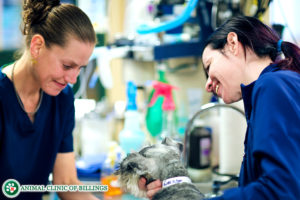Platelet Rich Plasma (PRP) Therapy
What is platelet rich plasma therapy?
Platelet rich plasma (PRP) therapy is a form of regenerative medicine that utilizes the healing properties present within the body’s own blood. Specifically, the structures in the blood called platelets, best known for their essential role in blood clotting, contain proteins called growth factors. When these growth factors are released in response to tissue damage, they promote tissue repair and reduce inflammation. They do this by recruiting reparative and regenerative cells to the area, stimulating the growth of blood vessels, suppressing inflammatory processes, and providing a scaffold for the rebuilding of cartilage and other tissues.
Platelet rich plasma is created by removing the majority of the red blood cells and white blood cells from a sample of a patient’s blood, resulting in isolation of the fluid portion of the blood (the plasma) and the platelets. This platelet-rich plasma can then be injected into a damaged joint or other damaged structure, where the platelets release their growth factors.
What conditions can be treated with platelet rich plasma?
Platelet rich plasma has been best studied in the treatment of osteoarthritis in dogs, although it also has potential benefits for treating injuries to tendons, ligaments, and muscles, as well as burn wounds, other complicated wounds, and bone fractures.
For arthritis, a dose of PRP is typically injected into the affected joint once every one to two weeks for one to five treatments, depending on the severity of the arthritis. The benefits of one course of treatment often last six to twelve months, and the best response is generally seen when PRP is combined with a physical rehabilitation therapy program.
For the treatment of other conditions, protocols are not as well-established, but a similar course of injections at varying intervals is likely to be helpful.
How is platelet rich plasma administered?
Platelet rich plasma is administered via injection into the damaged joint or tissue. This is usually done under sedation to help keep the patient still and comfortable during the procedure. A small patch of skin is shaved and cleaned with an antiseptic prior to needle insertion and injection of the PRP. It is important that the patient does not receive any steroids or non-steroidal anti-inflammatories within the week prior to or the two weeks following PRP administration, as these can interfere with the activity of the growth factors.
What are the risk and complications of platelet rich plasma therapy?
A couple of potential complications may be encountered with PRP therapy. In about 10-15% of patients, swelling and discomfort increase briefly in the 24-72 hours following PRP injection. This is manageable with oral pain medications. There is also the potential for infection to be introduced into a joint; this risk is minimized by using proper aseptic technique in the preparation of the PRP and by carefully cleaning the injection site with surgical antiseptic scrub prior to the injection.
What is the prognosis with platelet rich plasma therapy?
Platelet rich plasma therapy, while not a miracle cure, is an intervention that has the potential to enhance outcomes in a variety of situations, especially when used in combination with conventional treatments such as surgery, medications, and physical rehabilitation therapy. For chronic conditions such as arthritis, a course of PRP treatment will likely need to be repeated periodically to sustain its benefits. For wounds and injuries, a single course may be sufficient to achieve expedited healing.

Let our highly trained and experienced team of veterinarians and veterinary technicians help you keep your cat as happy and healthy as they can be.
Call the Animal Clinic of Billings and Animal Surgery Clinic to schedule your pet’s next wellness examination with one of our veterinarians today!
406-252-9499 REQUEST AN APPOINTMENT



